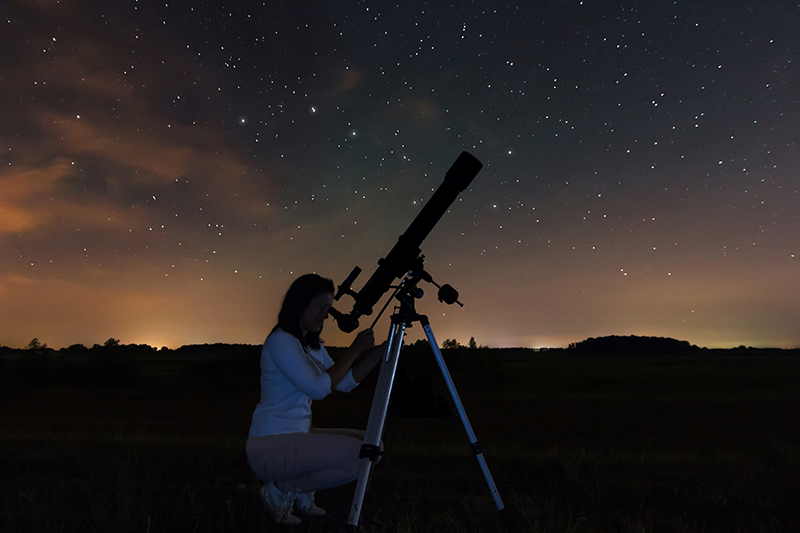Best Digital Telescopes: The Shocking Technology Thats Here
As a professional photographer, capturing the wonders of the night sky is not just a hobby; its a passion. Whether you are photographing celestial bodies, capturing the beauty of the cosmos, or simply gazing into the universe, having the best digital telescopes is crucial for achieving extraordinary results. With the advancements in technology, the market today is filled with unmissable options that elevate your photography and broaden your horizons.
The right telescope can be a game changer, offering remarkable clarity and detail in your images. With so many choices available, it can be overwhelming to find the perfect fit. In this article, we will explore the features, benefits, and our top picks for the best digital telescopes designed specifically for professional photographers.

Features to Look for in Digital Telescopes
When choosing a telescope, its essential to consider certain features that can enhance your photography experience. Here are some important factors:
1. Aperture Size
The aperture of a telescope determines how much light enters the device. For astrophotography, a larger aperture allows for brighter and clearer images of distant objects, making it a priority for professionals. Consider telescopes with an aperture of at least 70mm for deep-sky photography.
2. Mount Type
The stability of a telescope largely depends on its mount. There are two main types: alt-azimuth (up and down, left, and right movement) and equatorial (aligned with the Earths rotation). An equatorial mount is beneficial for long-exposure photography, allowing for smoother tracking of celestial bodies.
3. Digital Features
Modern telescopes come equipped with various digital features such as smartphone compatibility, built-in Wi-Fi, and tracking software. These features can significantly enhance your photography and make operation easier.
4. Portability
As a traveling photographer, you may want a telescope thats easy to transport. Look for compact designs that still offer robust performance.
Top Picks for Best Digital Telescopes
Now that you know the important features to consider, lets take a closer look at our top picks for the best digital telescopes for photographers!
1. Celestron NexStar 8SE Telescope
The Celestron NexStar 8SE is known for its large 8-inch aperture and advanced telescope technology. This telescope is perfect for photographers as it offers a stable mount, high-quality optics, and is compatible with various cameras. Its portability makes it ideal for outdoor sessions, and you can easily set it up in your backyard or during trips to remote locations.
2. Orion StarBlast 4.5 Astro Reflector Telescope
For those who are new to astrophotography, the Orion StarBlast 4.5 is a budget-friendly option that doesnt compromise on performance. The portable design means you can take it on your travels, while the quality optics provide a clear view of star clusters and planets.
3. Meade Instruments 216001 Polaris Telescope
The Meade Instruments Polaris telescope features a 127mm aperture. The easy-to-use setup and equatorial mount make it an excellent choice for long exposure shots and detailed images. This is a great fit for photographers looking for something user-friendly but packed with features.
Calculating Your Photography Success
While having the right equipment is critical, understanding how to make the most of your telescope is equally essential. Here are some tips for optimizing your photography with a telescope:
1. Practice with Your Setup
Before heading out for a major shoot, spend time familiarizing yourself with your telescope. Practice focusing on different celestial objects to ensure you capture sharp and stunning images.
2. Use the Right Camera Settings
Dont rely solely on the telescopes optics; ensure your camera settings are optimal for low light and long exposure photography. Experiment with ISO settings, aperture, and shutter speed for the best outcomes.
3. Keep It Steady
Shaky images can ruin a great shot. Make sure to use a sturdy tripod or a steady platform for your camera setup. Additionally, consider using a remote shutter release to minimize vibrations.
Connecting with the Astronomy Community
Photography is as much about creativity as it is about community. Join local astronomy clubs, forums, and online communities where photographers share tips, images, and experiences. Platforms dedicated to astrophotography, such as NASAs Astronomy, often host discussions that can help photographers learn and grow together.
Conclusion
Choosing the best digital telescopes for your photography can drastically improve your images and overall experience. By prioritizing features that matter most to you and leveraging the tips shared, you can capture remarkable photographs of the night sky.

FAQs
1. How much do professional digital telescopes cost?
The price of digital telescopes can vary widely from a few hundred to several thousand dollars depending on the brand, features, and specifications.
2. Can I use a regular camera with a telescope?
Yes, most modern telescopes can be adapted to work with regular cameras or DSLR cameras, but you may need additional tools such as an adapter.
3. Whats the best time to photograph celestial objects?
Early mornings or late evenings are often ideal for astrophotography, especially when there is less light pollution and clearer skies.

